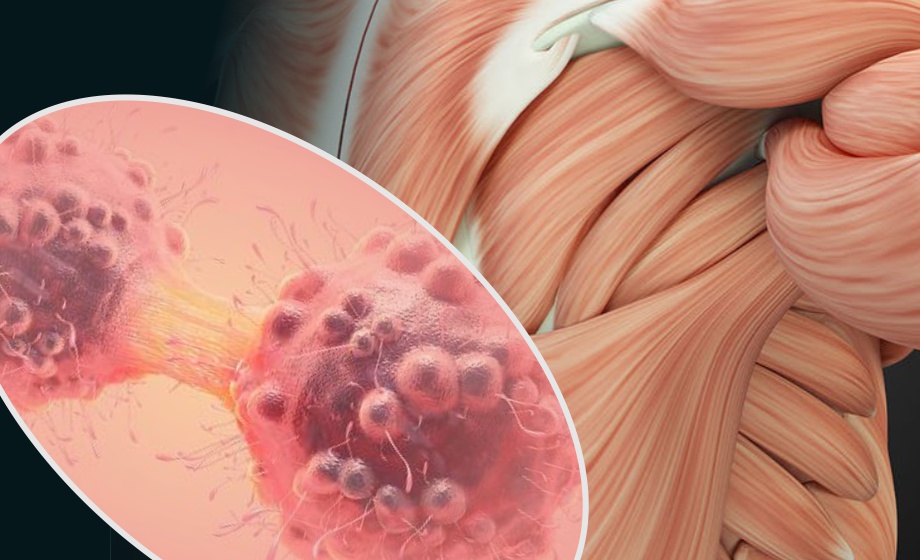Q&A Report: Musculoskeletal Complications of Cancer and its Treatments

These answers have been provided by:
Andrea Bonetto, PhD
Associate Professor, Surgery
Indiana University
Bone muscle and adipocytes come from the same MSC origin. Do adipocytes need to be included in this scenario?
Absolutely! We have not had a chance to investigate the relationship between adipocytes-fat and muscle-bone yet. However, a role of adipocyte wasting and excessive lipolysis in the pathogenesis of cachexia has been investigated for quite some time and seems to confirm the importance of looking at fat as a source of pro-cachectic factors.
In some of the force-frequency curves you see higher frequencies cause lower torque production than the moderate frequencies. Why do you think this is happening?
We see that this effect is much more pronounced in the cachectic animals, which brings me to think that the cachectic mice (especially for in vivo testing) are much more susceptible to fatigue. Clearly by the end of the force frequency sequence the cachectic mice are much more ‘fatigued’ and are unable to generate force. This could also be a limitation of the protocols administered. Meaning, we typically only allow 1-minute rest in between stimulations/contractions. In theory, during tetanic contractions more rest should be given to allow for greater recovery.
How does the quantity of bone loss in the RANKL expressing C26 model compare with other established cachexia models? Is the lack of a skeletal phenotype in normal C26 model due exclusively to low RANKL expression or are there other reasons why this model exhibits no bone phenotype?
The mice bearing RANKL-expressing C26 cells present very elevated levels of circulating RANKL, whereas the amounts of bone loss are comparable to other models of cancer- or chemotherapy-induced bone loss, suggesting that RANKL plays a critical role in regulating bone homeostasis, though there could be other factors that participate in the process. We have been actively investigating the molecular reasons responsible for the lack of bone loss in mice bearing C26 subcutaneous tumors. We have identified other factors that contribute to muscle and bone loss in colorectal cancers, independent of RANKL, in particular in a setting of CRC-induced liver metastases.
In bone cells, RANKL signals via PI3K/ AKT signaling. This is a well know anabolic signaling pathway in skeletal muscle, yet RANKL appears to cause muscle atrophy. Would you be able to speculate what are the basis for this contradiction?
In our models, the PI3K/AKT signaling in muscle does not seem to be activated upon modulation of RANKL levels, maybe suggesting that RANKL activates other (unknown) pathways. We usually see activation of the TRAF6 and NFkB-dependent pathways, along with modulation of several other pro-inflammatory pathways, known for their pro-cachectic functions.
Exercise has been proposed as a therapy for muscle wasting due to cancer cachexia. Are adverse effects less in physically active patients before starting therapy?
Yes, it is known that exercise contributes to preserve muscle size/function, as well as reduces chemotherapy-associated toxicities in patients undergoing chemotherapy treatments. Here at IU we are planning to open a room in our cancer center, right next to the infusion center, where patients can do some moderate exercise right before their infusion.
Would you speculate whether the bone and muscle loss you observe in the mice treated with the chemotherapeutics are direct a effect in the muscle or a consequence of, for example, anorexia or reduced nutritional intake? Did you measure food intake? Have you conducted pair feeding experiments?
We cannot exclude that changes in food intake play a role in driving muscle and bone loss, as we have not performed pair feeding experiments. We have measured food intake in animals receiving chemotherapy and found transient/acute losses of weight due to reduced appetite. However, in general the animals recover their body weight after 24h from treatment (as we published in the past) and on average the overall/cumulative food intake is not significantly different vs. the control animals.
In lung cancer, targeted therapy may result in shrinkage of metastatic bone tumors. Would you expect this to present an opportunity for improved muscle mass and function?
Yes, ideally we would expect improved muscle size and function, especially due to reduced release of TGFbeta from the bone matrix. However, as we have published, chemotherapy per se is responsible for negative effects on muscle mass. Therefore, we may end up not seeing any beneficial effect overall.
Both RANK and RANKL have been identified in extracellular vesicles released from osteoclasts and osteoblasts. Have you investigated this in your models and do such extracellular vesicles reach skeletal muscle?
No, we have not. Some investigators have looked at microvesicle and exosomes as transporters of microRNA, which have been identified as playing a role in cachexia. This is actually a very interesting point that I am not sure anyone in the cachexia field have investigated thus far. Thank you for the suggestion.
Does cancer/chemotherapy alter osteocyte mitochondria and metabolism?
We know that cancer affects osteocyte viability (as we recently published in Pin et al., Cancer Letters, 2021) and promotes changes in osteocyte functions/behaviors, with the appearance of osteocytic osteolysis, for example. However, we have not looked at effects in terms of mitochondria and metabolism.